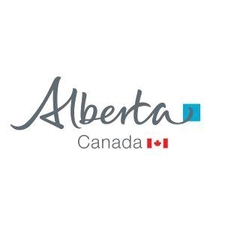HYDROLOGY
Type of resources
Topics
Keywords
Contact for the resource
Provided by
Formats
Representation types
Update frequencies
status
-

This dataset is produced for the Government of Alberta and is available to the general public. Please consult the Distribution Information of this metadata for the appropriate contact to acquire this dataset. The Base Watersheds data was created by re-working and post-processing the digital elevation data from the Alberta Provincial Digital Elevation Model, the digital hydrography data from the Base Stream and Flow Representation Lines, the Base Waterbody Polygons and the Base Hydrography Point Events and the digital boundaries of the ATS Version 4.1 Alberta Provincial Boundary. The digital elevation data was hydrologically corrected using simplified versions of the Base Stream and Flow Representation Lines and the Base Waterbody Polygons. The digital watersheds were created using the hydrologically corrected filled Alberta Provincial Digital Elevation Model data as a base and the simplified versions of the Base Stream and Flow Representation Lines and the Base Waterbody Polygons as pour points. The routes were created from the raw and simplified versions of the Base Stream and Flow Representation Lines using the names or the longest stream as the base. Strahler Order coding was applied to the simplified version of the Base Stream and Flow Representation Lines and the Base Waterbody Polygons as well as the digital watersheds. Hydrocoding was applied to the routes. The reaches were not created but would be generated using the simplified version of the Base Stream and Flow Representation Lines as a base and the hydrologically corrected filled Alberta Provincial Digital Elevation Model plus the Base Hydrography Point Events to determine the breaks. The Base Watersheds consists of four data packages: Base Watersheds - Hydrologically Corrected Filled Digital Elevation Model (DEM), Base Watersheds - Simplified Hydrography, Base Watersheds - Watersheds and Base Watersheds - Routes. The four data packages are composed of: Base Watersheds Hydrologically Corrected Filled Digital Elevation Mode (DEM) Hydrologically Corrected Fully Filled Terrain Hydrologically Corrected Fully Filled 25 Metre Raster Hydrologically Corrected Fully Filled 100 Metre Raster Hydrologically Corrected Partially Filled Terrain Hydrologically Corrected Partially Filled 25 Metre Raster Hydrologically Corrected Partially Filled 100 Metre Raster Simplified Hydrography Simplified Linear Network Lines Simplified Linear Network Points Simplified Hydropolygons Simplified Linear Network Cross Reference Simplified Hydropolygons Cross Reference Strahler Order Coding Watersheds Fully Filled Watersheds Partially Filled Watersheds Strahler Order Coding Routes Single Line Network Routes Simplified Linear Network Routes Hydrocoding These feature datasets, feature classes and tables were generated using the Base Features Derived Watersheds and Hydrocoding Specifications documents. There are six documents in this collection: Overview Strahler Order Coding Filled Hydrologically Corrected Terrain Watersheds Hydrocoding Reaches Full descriptions of the individual datasets are included in the metadata for the four data packages.
-

This GIS dataset depicts an estimate of average annual groundwater recharge in the Edmonton-Calgary corridor based on hydrological water budget analysis using climate and hydrometric data from Environment Canada, the Water Survey of Canada, and Alberta Environment and Sustainable Resource Development. This average annual groundwater recharge grid was generated to assist in building steady-state numerical groundwater flow models for large regions within the Edmonton-Calgary Corridor.
-

Sub-regional plans support working landscapes that provide economic opportunities and maintain healthy landscapes by outlining management approaches and requirements for development and human footprint restoration. These plans enable public lands to support the interests of all Albertans, including Indigenous peoples, for the present and into the future. The Cold Lake Sub-Regional Plan Spatial Data dataset contains spatial data that can be used for planning as described within the Cold Lake Sub-regional Plan (2022). The following datasets are available: Recreational Management Areas, Access Management Plan Centerlines, and Riparian Setbacks. Please see the metadata on the individual datasets for details.
 Arctic SDI catalogue
Arctic SDI catalogue